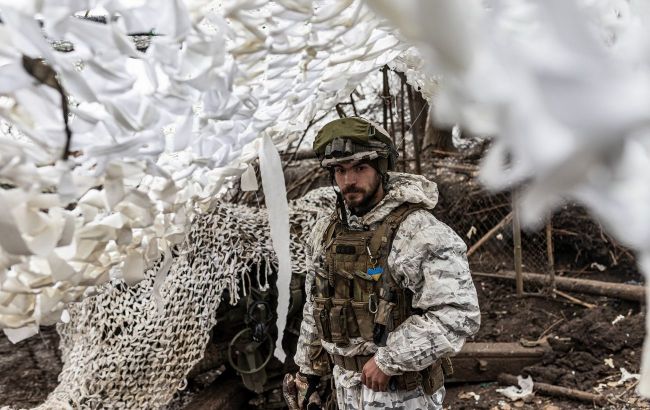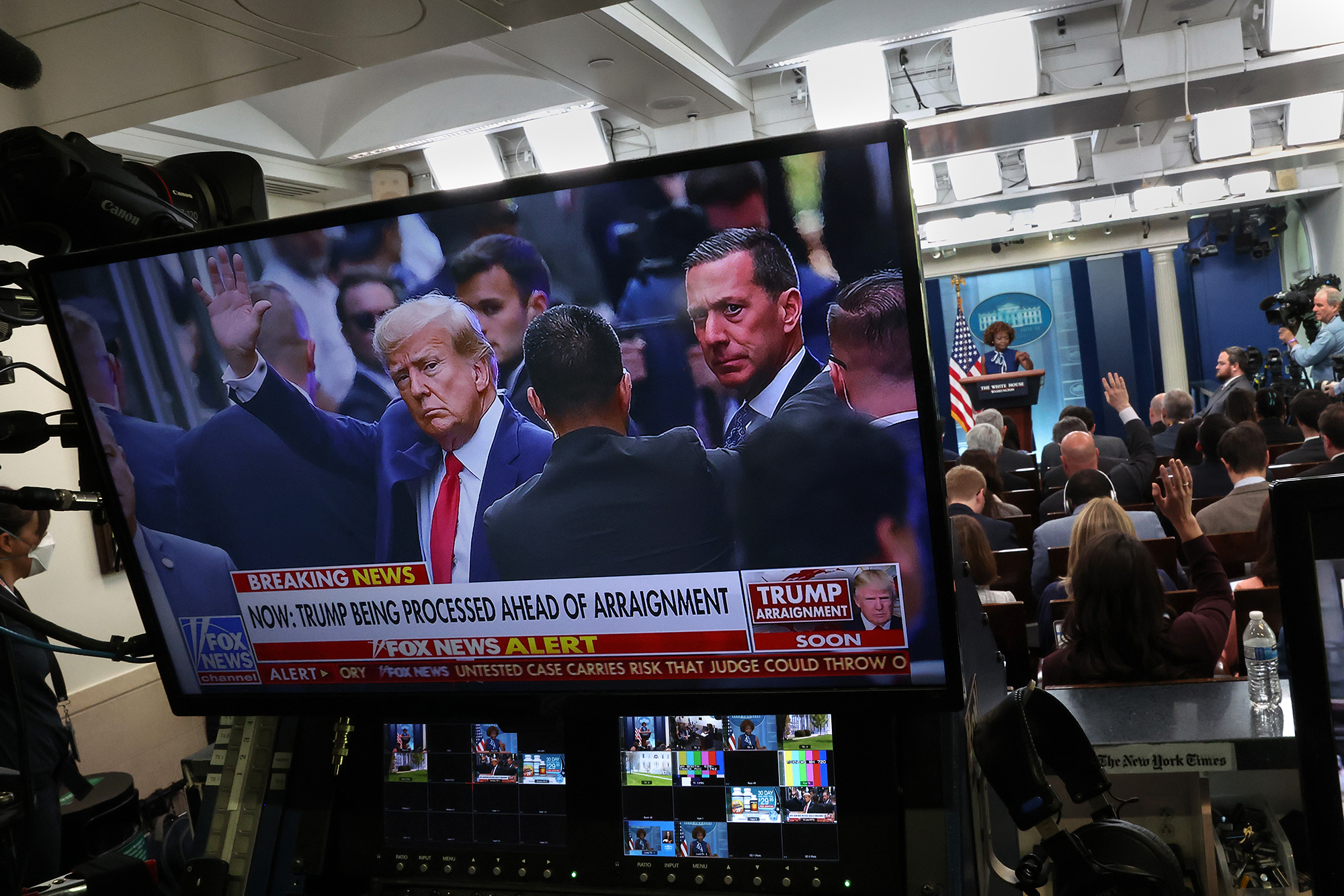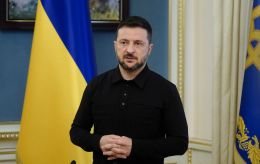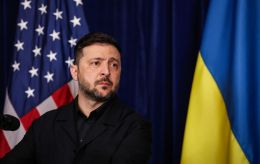Outlook for Russia-Ukraine frontlines: Winter dynamics and war in 2024
 The offensive of the Armed Forces of Ukraine in the South continues, but less intensively (photo: GettyImages)
The offensive of the Armed Forces of Ukraine in the South continues, but less intensively (photo: GettyImages)
Ukraine's offensive in the South, expectations at the front in 2024, and how a possible victory of Donald Trump in the US elections could affect the war.
Sources used: publications of The Washington Post, Bloomberg, Telegram channel DeepState, and conversations with a representative of the Ukrainian special services and officials on the condition of anonymity.
The fog of war is increasingly covering the front line. Since the summer, the global situation has not been in favor of Ukraine. Both our and Western societies had high expectations from the offensive operation of the Ukrainian Armed Forces. The ideal scenario would look like this: in a matter of months, the Defense Forces reach Crimea, win back some part of the territories in the East, and with the participation of intermediaries, from a position of strength, either force Moscow to end the war on favorable terms, or continue to move towards the borders.
However, in six months, the Ukrainian army managed to penetrate the Russian defense lines by less than a dozen kilometers in each of the three directions where our offensive in the South began. One of the desired goals - cutting the Azov region's land corridor to the occupied Crimea - has still not been achieved.
The described picture is highly correlated with the estimates contained in the so-called Pentagon leak. Although the authenticity of these materials was never confirmed, in the forecasts dated back to the beginning of February, there was talk of "modest territorial gains" in the future offensive of Ukraine: "Neither side will achieve victory. In 2023, peace negotiations between Russia and Ukraine are not expected. The hostilities will continue next year as well."
The lack of breakthroughs on the battlefield only strengthens the voices of Western "peacemakers" politicians. And it is becoming increasingly difficult for Ukraine's allies to maintain consolidated support for Ukraine. This is the reality for Ukraine today. But what events can be seen in this fog of war for the future?
Hold out until spring
In addition to the Tokmak and Melitopol directions, the Ukrainian Defense Forces continue to pressurize in two other directions - in the Bakhmut area and on the left bank of the Kherson region. Ukrainian officials assure that the offensive operation in the South is still continuing, albeit with less intensity. However, winter weather objectively slows down traffic.
Much has already been written about the factors that led to very limited advances in the Azov region, in particular in the reports of RBC-Ukraine. In short, this is an underestimation of the enemy's training, a lack of superiority in the air, and a network of mines.
Meanwhile, Russia has become more active in almost all directions in the East, forcing the Ukrainian command to concentrate combat-ready brigades not on the offensive, but on deterring enemy attacks.
Russia's problem is that their current production does not produce anything high-tech. Covert mobilization is sufficient only for replenishment of losses, but not for broad offensives and massive "meat assaults". The same applies to artillery shells: Russia continues large-scale production of munitions - up to 2 million per year, which significantly exceeds the current capabilities of the US, plus significant supplies have apparently already arrived and may arrive from North Korea. But neither its own military-industrial complex nor the help of Moscow's partners, allows the use of massed fire, as the Russians did last year, pushing it into the Luhansk region. At that time, the enemy fired about 50-80 thousand shots per day. Now their capacity is many times smaller.

Until the end of winter, fighting at the tactical level is likely to continue (photo: GettyImages)
Despite the efforts made by both sides, it is not necessary to expect significant breakthroughs until the end of winter. And neither from the Ukrainian side nor from the side of Russia. It is likely that sometime until the spring, intense battles at the tactical level will continue on the front. In parallel, both Russia and Ukraine will focus on striking with long-range weapons. Moscow – to destroy our energy system, Kyiv – to respond and destroy enemy logistics.
The Foreign Intelligence Service believes that under such conditions, the Kremlin can bet on a new strategy to sow chaos in Ukraine. According to Moscow's logic, this will incline the West to the path of negotiations and the cessation of military aid. Destabilization inside Ukraine, in addition to the destruction of critical infrastructure in winter, will include two more components: the undermining of internal social unity, as well as pressure on the front with the capture of "politically and media-important points."
Avdiivka, where the enemy has intensified offensive operations since the beginning of October, can become such. This is also confirmed by RBC-Ukraine's own sources in the special services: Moscow's immediate task until the end of winter is to capture this city. The enemy's plan is to capture Avdiivka or cause such a threat to its surroundings that it will force Ukrainian units to withdraw from there. Now the distance between the northern and southern flanks, where the Russians are advancing, is up to seven kilometers.
By capturing Avdiivka, the enemy pursues another important goal. The Russian generals must bring Putin something that can be called a "victory" before his presidential election, which will take place in mid-March. It is quite difficult to predict our chances of holding Avdiivka now, the pressure of the aggressor on this part of the front is really crazy.
It is the election factor that prevents the Kremlin from announcing a new wave of mobilization, which the occupiers need to carry out a wider and more effective offensive. Nothing will stop Putin from doing this after the campaign, but then the influx of soldiers to the front will be only in the summer or even in the fall.
It is quite likely that, taking advantage of this situation, sometime from the end of winter or spring, the Ukrainian Defense Forces can start a new phase of their offensive operation. Provided that there are enough forces and resources. Where will it be? Alternative directions, except for those where the Ukrainian troops are moving today, are not visible.
 The Defense Forces may step up their offensive in the South next year (photo: GettyImages)
The Defense Forces may step up their offensive in the South next year (photo: GettyImages)
Using satellite images, the DeepState team assumed that the enemy had dug up more than 6,000 kilometers of engineering and fortification structures along the front. The most fortified regions are Zaporizhzhia and Donetsk, where the length of the defensive lines is 1,900 kilometers each. Less - in Luhansk region and Kherson region, but they are also significant. That is, there are now no significant "holes" in the line of defense of the occupiers, as was the case last year in the Kharkiv region. Therefore, the chances of rapid breakouts remain but are not high.
Under the sign of choice
In his recent column for the Economist, Commander-in-Chief Valerii Zaluzhnyi points out six factors that Ukraine needs to break the deadlock at the front.
These are modern aviation for dominance in the sky, means of radio-electronic warfare, drones, means for counter-battery work and mine clearance, as well as the mobilization of human reserves for war.
For the next year, the partners have already promised to transfer several squadrons of F-16 fighters to us. They are able to revive the Ukrainian movement, in particular on the left bank of the Kherson region. But in the number in which these planes will arrive at the beginning, they will not be able to fundamentally change the situation at the front.
What will our success in next year's war depend on? Ukraine is waging a symmetrical war with artillery and armored vehicles, achieving shaky parity with Russia at the front. However, the enemy also learns and quickly adapts its tactics to new challenges. Therefore, in the future, the war will require not only the support of the partners, at least in terms of the range of weapons that they are handing over to us today, but also breakthrough decisions on all the positions that the head voiced.
But with regard to the continuation of the help of the allies, the situation today does not look clear. And because of industrial restrictions: the European Union is working hard to supply us with one million artillery munitions in a year - from April 2023 to March 2024 - while the DPRK sent such a number of shells to Russia in just three months. And because of the work of the Russian informational and psychological operation, which fans the problem of Ukrainian corruption abroad, promotes pro-Kremlin political forces and fuels the war-weariness of the population of Western countries. Due to internal political strife - the issue of aid to Ukraine has become the subject of negotiations between opposing parties.
Due to the lack of confidence in the ability of the West to continue supporting Ukraine, the opinion that there is no alternative to peace negotiations with Moscow is increasingly being read in the materials of foreign media. In the long term, they probably cannot be completely excluded - most wars, one way or another, end with the conclusion of some kind of treaty. But today - without a strong position on the battlefield and clear security guarantees from partners - they are definitely harmful to Ukraine. Over the years, the Kremlin will accumulate resources, rearm, and with a high probability will attack again.
Another important factor that is already superimposed on the war is the elections that will be held in a number of countries on both sides of the Atlantic. In particular, in the USA, which is currently a key partner of Ukraine. The atmosphere of pre-election races is already slowing down support for Ukraine. The initiative of the White House to allocate 61 billion dollars to help Kyiv has been suspended at the level of Congress.
 Putin may count on Trump to be more sympathetic to Russia (Photo: GettyImages)
Putin may count on Trump to be more sympathetic to Russia (Photo: GettyImages)
The biggest fears in the background of the American elections are related to the possible victory of Donald Trump in the fight for the presidential seat. During the full-scale war, he made "curts" to Moscow more than once, but his plan and strategy for Ukraine still remain unclear. In an interview with Meet the Press this September, he said he would resolve the issue of war within 24 hours if he was re-elected president. But his previous campaign and tenure were marked by similar populist statements. His drastic steps and actions often did not match his previous slogans.
The arrival of Trump is another likely bet that Moscow is making. The Kremlin can hope that the new US leader will force Ukraine to negotiate on Russia's terms. However, there is an important condition here - if the Defense Forces do not have significant achievements on the battlefield by then.
In fact, the situation can develop quite differently, according to an informed interlocutor in the Ukrainian special services. As an option, Trump can shift most of the obligations to help Ukraine from the US to Europe. Republicans benefit from continuing to pressure Russia to deprive China of a powerful ally. Therefore, under one or another scenario, support for Ukraine next year, even in the event of Trump's victory, will continue, perhaps even in the same volume as this year.
***
The coming months will be a serious test for Ukraine. The task of Ukrainian society is to persevere, preserve unity, and accept the idea that now we are running not a sprint, but a marathon.
Now you can find other analogies in the public space. More and more often, analysts talk about the similarity of the current stage of the war with the First World War, when the situation looked like a stalemate for years. But the positional phase of this war lasted more than three years, and finally, in 1918 there was a breakthrough. How and why is a topic for a separate discussion. However, this is a good illustration of the fact that there is still a way out of deadlocks.

